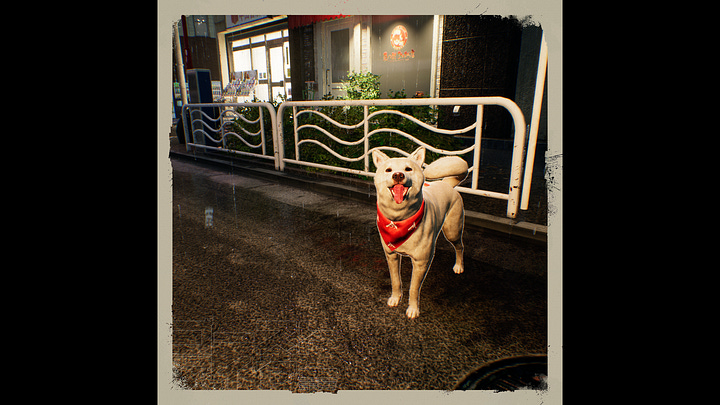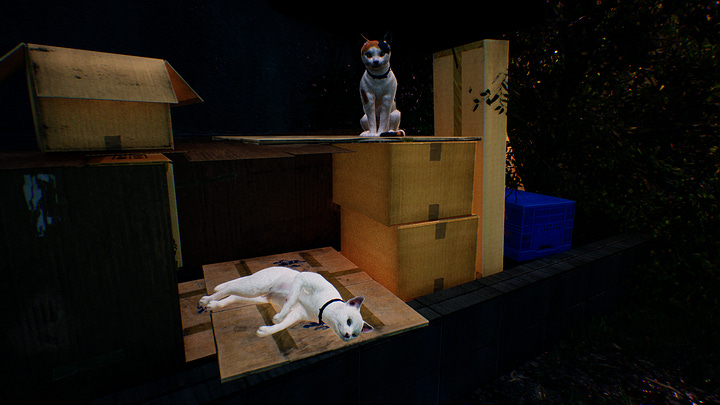Rain falls heavily on the dark streets of Tokyo. Shop lights filter through the falling water, giving an ominous glow to the scene.
Apart from the sound of the rain itself, the city is deathly quiet. There are no people left in Tokyo. All of them vanished when the ominous, otherworldly fog rolled in, fast and thick. Now the only denizens left are the cats and dogs wondering what happened to their owns. And the ghosts.
Some of these ghosts are harmless, spirits of those who are stuck on the mortal plane, some unfinished business holding them here. Yet there are other, more malevolent spirits, who bar the way. Filled with range and anger, these spirits wish to devour any human in Tokyo who yet lives. Unfortunately, the only person still alive on these damp streets…is me.
Ghostwire: Tokyo is a 2022 game from now-defunct developer Tango Gameworks. Released on Playstation 5, Windows PC and X-Box Series consoles, the game was a modest success upon release but has since gone on to become something of a cult classic.
I first played the game in late 2024. The supernatural element of the game, as well as the non-traditional FPS combat, really piqued my interest. I did not realise before playing how exploration heavy the game was, but I was pleasantly surprised.
The game is set in modern-day Tokyo after an occult event has wiped all humans from the face of the city. Well, almost all. The one responsible for the event still remains, as does our hero Akito Izuki, who is saved by a strange twist of fate. As the only person able to stand up against the occult practitioner, it falls to you to restore Tokyo and save the lives of its population.
The Tokyo presented in Ghostwire is haunting and atmospheric. While some real life landmarks, such as Shibuya Crossing, appear, for the most part it’s a “summarised” version of the city. Temples, neon-lit high streets, the suburbs and downtrodden tenement buildings are just some of the locations that Ghostwire offers up to explore. All of these are drenched in a supernatural, atmospheric vibe that really helps make the locations stand out. Perhaps most unsettling is just how quiet the game is. Due to the people having vanished, the only sounds in Tokyo are the barks of a distant dog searching for its owner, or the mournful sighs of the spirits left behind.
Every nook and cranny of the city can be explored, from temples located in the middle of forests to large shopping districts. This helps to elevate the sense that the Tokyo of Ghostwire was lived in before the incident at the start of the game. You’ll see small aspects of people’s lives as you wander around; half-eaten dinners still sitting on restaurant tables, shopping bags discarded and, perhaps most hauntingly, the empty clothes laying on the ground that once belonged to those who lived here.
These modern urban aspects are mixed together with those from Japanese folklore. Torii gates, which must be cleansed as they act as gateways to the spirit world, glow with an otherworldly brightness. Turning the corner of a street you may catch a glimpse of a Rokurokubi spirit peeking at you before it darts away. In fact, you’ll be interacting a lot with the creatures of Japanese folklore; from revealing hidden Nurikabe to chasing down Kamaitachi, every corner of the city has secrets to reveal.
Exploration in Ghostwire is not constrained to the streets, however. You can climb to the top of the city’s many buildings and, after upgrading your spirit skills a little, bound from building to building. From above you can see the whole of Tokyo sprawled out before you, the moonlight illuminating the view in an eerie silver glow. At somewhat regular intervals during your exploration, the heavens will open and a shower of rain will fall drenching the streets. The rain adds another layer of atmosphere to the game, and was actually some of my favourite moments. In a nice touch, many of the enemy spirits you encounter carry umbrellas which they also use as makeshift shields, repelling your elemental-based attack back at you. There also numerous cats and cute doggos with which to interact, some of which will reveal hidden secrets to you.


The city of Tokyo is a wonderful location for a video game, and Ghostwire presents a beautifully haunted version of it to explore. While Ghostwire's Tokyo isn’t as big as some other games’ open worlds, there is so much packed into it that you hardly noticed. By combining a modern city with traditional Japanese folklore elements, Tango Gameworks have created a truly unique location that is perfect for those of us who like to make sure no digital stone is left unturned in our games.
Thanks so much for reading. If you enjoyed this article, why not check out the others in the series? Also consider supporting Geekology with a monthly subscription by hitting the button below.







It sounds like my type of game! I particularly love the idea of encountering the pets left behind. :)